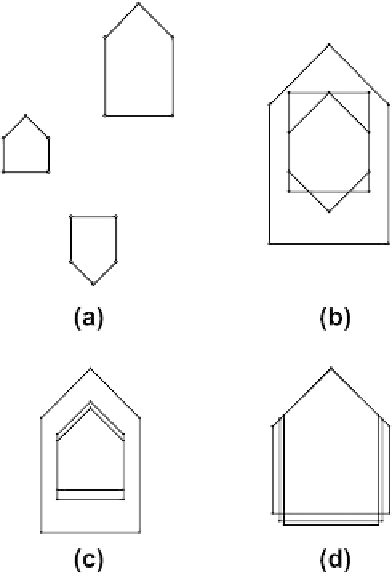Biology Reference
In-Depth Information
deviation) or convergence (no significant change in mean configuration from one iteration to
the next) occurs.
The details of the mathematical and algorithmic basis for Procrustes superimposition are
beyond the scope of this chapter, and for a thorough understanding of the theoretical under-
pinnings of Procrustes methods, the reader is directed to literature documenting the devel-
opment of these methods (
Gower, 1975; Rohlf and Slice, 1990; Goodall, 1991; Dryden and
Mardia, 1993
) and to the review found in
Slice (2005)
. The process of Procrustes superimpo-
sition is visually represented in
Figure 12.4
, and an example of cranial landmark configura-
tions both before and after generalized Procrustes analysis is shown in
Figure 12.5
.
The purpose of the scaling step in Procrustes superimposition is to facilitate assessment of
shape variation without the confounding factor of size differences. It also permits the aggre-
gation of males and females from a group, which can be useful in biological anthropology
both due to research designs and to remedy small sample sizes. When desired, size can be
reincorporated in the statistical analysis by using Centroid Size or the natural logarithm of
Centroid Size as a variable.
After a GPA, the fitted coordinates are Procrustes shape coordinates, which can be statis-
tically manipulated for further analysis. Since the shape coordinates do not exist in Euclidean
space and will not produce a variance
e
covariance matrix of full rank, either they need to be
FIGURE 12.4
The steps of a Procrustes superimposition starting with (a) raw coordinate-based configurations
that undergo (b) Step 1
d
translation, then (c) Step 2
d
rotation, and finally (d) Step 3
d
scaling.


